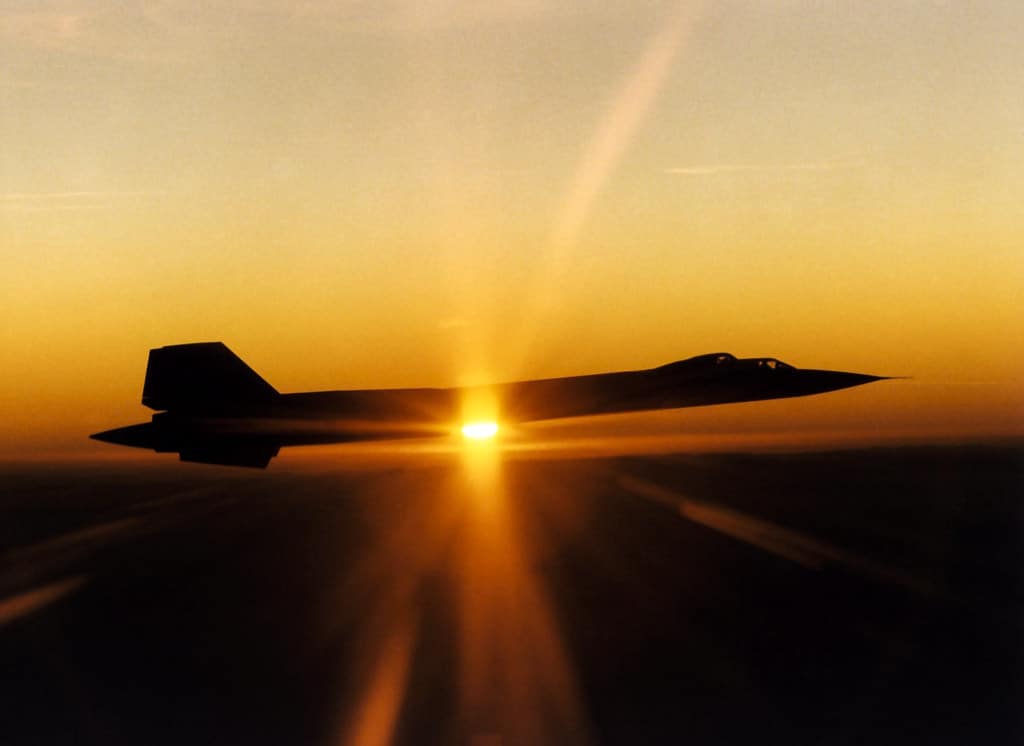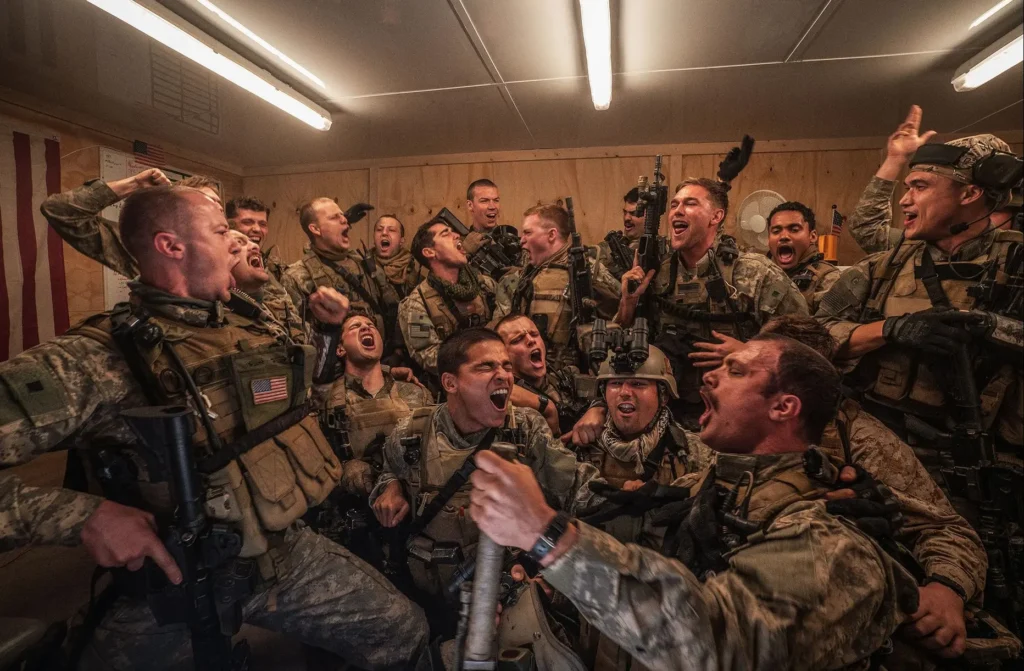That time an SR-71 crew shut down a sky bully on the radio
- By We Are the Mighty
Share This Article

Pissing contests are nothing new to the military. Anything that can be measured or scored will inevitably be used by a troop to try and one-up another. And when we know we have something over someone, we won’t let them forget it.
Within the aviation community, speed is king. And if you can fly faster than anyone else, then you’re the biggest badass in the air.
This is the story of perhaps the greatest one-upping in aviation history. It’s just one chapter of the fascinating story of Major Brian Shul, a life fully described in his autobiography, Sled Driver: Flying the World’s Fastest Jet.

Just to give you a picture of this badass, back in the Vietnam War, Shul flew an AT-28 and conducted 212 close air support missions. He was shot down near the Cambodian border and was unable to eject from his aircraft. He suffered major burns and other extensive wounds across his body while the enemy was circling around him. It took more than a day for pararescue to safely get him out of there and back to a military hospital stateside, at Fort Sam Houston.
It took two grueling months of intensive care, over 15 major operations over the course of a year, and countless physicians to get right. Doctors told him he was lucky to survive — and that he’d never fly again. He proved them wrong by flying his fighter jet just two days after being released.
Shul would later move on to flying the A-7D, was a part of the first operational A-10 squadron, and went on to be one of the first A-10 instructor pilots — all before finally being given the sticks to fly the SR-71 Blackbird. He went from almost certain death to piloting the fastest and highest-flying jet the world has ever seen.
And he remained humble throughout.

Shul and his RSO (or navigator), Maj. Walter Watkins, were on their final training sortie to finish logging the required 100 hours to attain “Mission Ready” status over the skies of Colorado, Arizona, and California. Zooming 80,000 feet above the Earth was a beautiful sight — in his book, Shul recalls being able to see the California coast from the Arizona border. Shul asked Watkins to plug him into the radio. Most of the chatter they heard was from the Los Angeles Center — it was typical radio traffic.
Usually, the Blackbird pilots wouldn’t bother chiming in, but this day was different.
We listened as the shaky voice of a lone Cessna pilot asked Center for a readout of his ground speed. Center replied: “November Charlie 175, I’m showing you at ninety knots on the ground.”
As a matter of protocol, the Center controllers will always treat everyone with respect, whether they’re a rookie pilot flying a rinky-dink Cessna or they’re arriving in Air Force One. Shul also recalled, however, that the more arrogant pilots would chime in, trying to act tough by requesting a readout of their own ground speed — just to show off to other nearby pilots.
“Just moments after the Cessna’s inquiry, a Twin Beech piped up on frequency, in a rather superior tone, asking for his ground speed. ‘I have you at one hundred and twenty-five knots of ground speed.’ Boy, I thought, the Beechcraft really must think he is dazzling his Cessna brethren. Then, out of the blue, a navy F-18 pilot out of NAS Lemoore came up on frequency.“

“You knew right away it was a Navy jock because he
sounded very cool on the radios. ‘Center, Dusty 52 ground speed check.’ Before Center could reply, I’m thinking to myself, hey, Dusty 52 has a ground speed indicator in that million-dollar cockpit, so why is he asking Center for a readout? Then I got it, ol’ Dusty here is making sure that every bug smasher from Mount Whitney to the Mojave knows what true speed is.“
“He’s the fastest dude in the valley today, and he just wants everyone to know how much fun he is having in his new Hornet. And the reply, always with that same, calm voice, with more distinct alliteration than emotion: ‘Dusty 52, Center, we have you at 620 on the ground.’”
Keep in mind, there is no air-breathing aircraft on this planet that is faster than the SR-71 Blackbird. The only things faster are space shuttles and experimental, rocket-powered aircraft intended to reach the edges of outer space.
So, they chimed in.
“Then, I heard it. The click of the mic button from the back seat. That was the very moment that I knew Walter and I had become a crew. Very professionally, and with no emotion, Walter spoke: ‘Los Angeles Center, Aspen 20, can you give us a ground speed check?’ There was no hesitation, and the replay came as if was an everyday request.”
“‘Aspen 20, I show you at one thousand eight hundred and forty-two knots, across the ground.’ I think it was the forty-two knots that I liked the best, so accurate and proud was Center to deliver that information without hesitation, and you just knew he was smiling.”

“But the precise point at which I knew that Walt and I were going to be really good friends for a long time was when he keyed the mic once again to say, in his most fighter-pilot-like voice: ‘Ah, Center, much thanks, we’re showing closer to nineteen hundred on the money.’ For a moment Walter was a god. And we finally heard a little crack in the armor of the Houston Center voice, when L.A. came back with, ‘Roger that, Aspen, Your equipment is probably more accurate than ours. You boys have a good one.’”
To put this in perspective, Brig. Gen. Chuck Yeager broke the speed of sound in his Bell X-1 when he went 713.4 knots, or 820.9 miles per hour if it were on land. The Navy F-18 pilot, the one trying to act like Chuck Yeager, was going almost that fast.
Shul was going 1,900 knots, which is the same as 2,186.481 miles per hour. That’s 2.84 times faster than the speed of sound.
“It all had lasted for just moments, but in that short, memorable sprint across the southwest, the Navy had been flamed, all mortal airplanes on freq were forced to bow before the King of Speed, and more importantly, Walter and I had crossed the threshold of being a crew. A fine day’s work. We never heard another transmission on that frequency all the way to the coast.“
“For just one day, it truly was fun being the fastest guys out there.“
This article by Eric Milzarski was originally published by We Are the Mighty.
Related Posts
Sandboxx News Merch
-

‘AirPower’ Classic Hoodie
$46.00 – $48.00 Select options This product has multiple variants. The options may be chosen on the product page -

‘Kinetic Diplomacy’ Bumper Sticker (Black)
$8.00 Add to cart -

‘Sandboxx News’ Trucker Cap
$27.00 Select options This product has multiple variants. The options may be chosen on the product page
We Are the Mighty
Related to: Military History

How Green Berets jumped from planes with a man-portable atomic bomb during the Cold War

The Navy’s plan for its next trainer jet shows how carrier aviation has changed

How an F-15E scored its only air-to-air kill… with a bomb

‘Warfare’ shows the brutal reality of combat for an elite unit
Sandboxx News
-

‘Sandboxx News’ Trucker Cap
$27.00 Select options This product has multiple variants. The options may be chosen on the product page -

‘AirPower’ Classic Hoodie
$46.00 – $48.00 Select options This product has multiple variants. The options may be chosen on the product page -

‘AirPower’ Golf Rope Hat
$31.00 Select options This product has multiple variants. The options may be chosen on the product page -

‘Sandboxx News’ Dad Hat
$27.00 Select options This product has multiple variants. The options may be chosen on the product page
